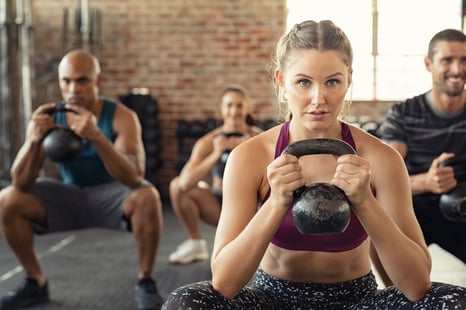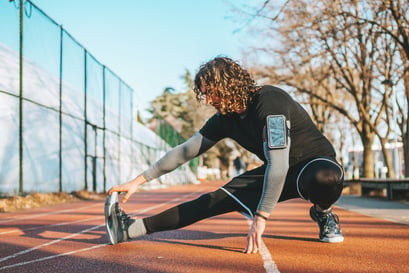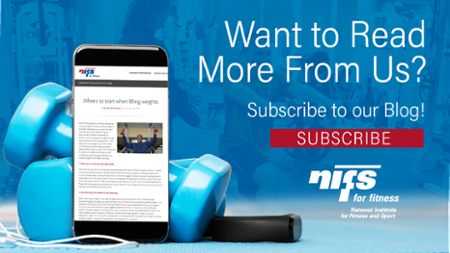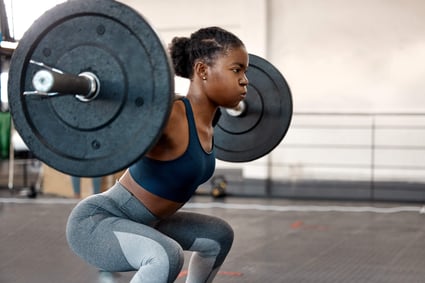 Weightlifting and resistance training are often associated with the “gym bro” or “jock” stereotype, as if the benefits only apply to people chasing new personal records or aesthetic goals. Because of that mindset, some might find it surprising to see an older adult in the weight room. If not to build muscle or break performance barriers, what’s the point? Wouldn’t it be dangerous for someone in their 50s, 60s, or beyond to lift weights? Surely nothing good could come from someone “older” picking up heavy objects regularly, right?
Weightlifting and resistance training are often associated with the “gym bro” or “jock” stereotype, as if the benefits only apply to people chasing new personal records or aesthetic goals. Because of that mindset, some might find it surprising to see an older adult in the weight room. If not to build muscle or break performance barriers, what’s the point? Wouldn’t it be dangerous for someone in their 50s, 60s, or beyond to lift weights? Surely nothing good could come from someone “older” picking up heavy objects regularly, right?
Well readers, it’s time to rethink that line of thought! For aging adults, resistance training offers tremendous benefits that go far beyond bigger muscles or smaller numbers on the scale. Here are a few reasons why lifting weights can be one of the best things you do for your long-term health.
Lifting Weights Builds Balance and Stability
According to the CDC, roughly 14 million older adults in the U.S. experience a fall each year—that’s about one in four adults over 65. Even more concerning, around 40,000 of those falls result in death. The good news? Many of these accidents are preventable.
A consistent strength training routine helps build the muscle needed to improve balance, coordination, and mobility. Stronger legs, hips, and core muscles stabilize your body and reduce your risk of falling in the first place. And if you do lose your balance, those same muscles can help you recover faster and minimize injury. With that confidence, you can move more freely and enjoy an active lifestyle without the constant fear of taking a tumble.
Strength Training Supports Independence
My grandmother has never been a fan of exercise. Because of that, she’s had to make some big adjustments as she’s gotten older. She struggles with walking and now has a live-in nurse to help her with daily activities. When she does get around, she uses a walker that she absolutely despises.
After some convincing, I finally got her to start doing simple upper-body exercises with resistance bands. She’s not thrilled about the soreness, but she can’t stop talking about how much lighter and easier her arms feel when she moves. As happy as I am to see her progress, I can’t help but think how much more freedom she might have if she had started sooner.
Let her story serve as a lesson: staying consistent with strength training helps preserve your independence. By maintaining muscle strength and joint stability, you’ll be better equipped to handle everyday tasks—like carrying groceries, getting up from a chair, or going for a walk—on your own terms.
If You Don’t Use It, You’ll Lose It
Here’s a fitness term worth knowing: sarcopenia—the gradual loss of muscle mass that occurs naturally as we age. It typically begins around age 60 but can start earlier in those who are physically inactive. Sarcopenia can lead to weakness, fatigue, and an increased risk of falls or injury. In some cases, it’s paired with obesity (known as sarcopenic obesity), which combines the challenges of excess body weight and muscle loss.
The good news is that this process isn’t inevitable. Regular resistance training can slow down or even reverse age-related muscle loss. By strengthening your muscles, you’re not just improving your physical appearance—you’re protecting your mobility, balance, and quality of life.
Start Your Strength Journey Today
It’s never too late to start building strength. Whether you’re new to fitness or returning after a break, even small steps make a big difference. Stop by the fitness center desk today for your free workout program and learn how you can safely begin your journey toward a stronger, more confident you—at any age.

 Parkinson’s Disease is a chronic neurological disorder that often causes muscle tremors, rigidity, balance issues, and loss of muscular control. For individuals living with this condition, maintaining a regular fitness routine is important—but equally important is incorporating mobility work into their daily lives. Mobility helps reduce the impact of these symptoms and supports success in both everyday activities and exercise routines.
Parkinson’s Disease is a chronic neurological disorder that often causes muscle tremors, rigidity, balance issues, and loss of muscular control. For individuals living with this condition, maintaining a regular fitness routine is important—but equally important is incorporating mobility work into their daily lives. Mobility helps reduce the impact of these symptoms and supports success in both everyday activities and exercise routines.

 We often focus on heart health strategies during waking hours—exercising regularly, staying physically active, and eating nutritious meals. For instance, aerobic exercise strengthens the cardiovascular system by enhancing the heart's efficiency. With consistent training, the heart pumps blood more effectively, leading to benefits like increased left ventricle size, stronger contractions, and greater stroke volume. Similarly, limiting foods high in calories, saturated fats, and refined sugars helps reduce harmful byproducts like cholesterol, triglycerides, and excess sugar. But what about the hours we spend sleeping? Could your sleep habits be influencing your long-term heart health?
We often focus on heart health strategies during waking hours—exercising regularly, staying physically active, and eating nutritious meals. For instance, aerobic exercise strengthens the cardiovascular system by enhancing the heart's efficiency. With consistent training, the heart pumps blood more effectively, leading to benefits like increased left ventricle size, stronger contractions, and greater stroke volume. Similarly, limiting foods high in calories, saturated fats, and refined sugars helps reduce harmful byproducts like cholesterol, triglycerides, and excess sugar. But what about the hours we spend sleeping? Could your sleep habits be influencing your long-term heart health?

 Functional training is an excellent approach for longevity and maintaining a healthy lifestyle and functioning body because it emphasizes movements that mimic activities of daily living, enhance flexibility, and improve overall mobility. In this blog, you will learn about the different functional exercises that can contribute to your longevity, along with their benefits and daily function.
Functional training is an excellent approach for longevity and maintaining a healthy lifestyle and functioning body because it emphasizes movements that mimic activities of daily living, enhance flexibility, and improve overall mobility. In this blog, you will learn about the different functional exercises that can contribute to your longevity, along with their benefits and daily function.  Everyone needs strong hips. Athletes need them to perform a wide variety of movements within a given sport. Aging adults need them to help reduce the risk of falls. When we think about the hip, most people think about the glutes and abductors. You can look in any gym and see a handful of people with a band around their knees performing a plethora of movements working the glutes and abductors. However, the most neglected muscle is the one on the inside of the thigh: the adductor.
Everyone needs strong hips. Athletes need them to perform a wide variety of movements within a given sport. Aging adults need them to help reduce the risk of falls. When we think about the hip, most people think about the glutes and abductors. You can look in any gym and see a handful of people with a band around their knees performing a plethora of movements working the glutes and abductors. However, the most neglected muscle is the one on the inside of the thigh: the adductor. 
 The
The 










